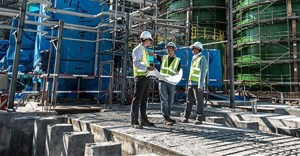
Black & Veatch report looks at smart city ecosystems

This year’s report addresses the interlocking pieces of the smart city ecosystem and their effects on public safety, quality of life and sustainability. Technology is changing how first responders, government officials, public agencies and transportation fleets operate. Alternative fuel sources and electric vehicle programs are transforming the movement of people and goods, while smart street systems create opportunities to generate value from existing municipal assets.
Utilities are making significant strides in modernising grid infrastructure. Exploring the integration of distributed energy resources (DER) will be key to master planning as more renewable energy makes its way onto the grid.
Centres of technological deployment
“Cities are poised to be the centres of technological deployment,” said Fred Ellermeier, VP and MD of Black & Veatch’s Smart Integrated Infrastructure (SII) business. “Many are already driving advancements in intelligent transportation systems and initiatives. They are rapidly moving past pilot phases to use advanced data networks to improve resident experiences across municipal departments and services.”
“Maintaining this momentum, however, will require the ability to see the larger nexus connecting data with critical infrastructure,” Ellermeier added. Many cities, he notes, have appointed “chief innovation officers” charged with understanding the technology landscape and championing smarter solutions.
While municipalities see the benefits of smart city initiatives and endorse long-term planning, the report found that they continue to overcome financial barriers. As a result, alternative strategies such as public-private partnerships, generating tax revenue from increased economic development, monetising data and leasing access to community-owned assets are becoming reality.
Betting on digitisation
Utilities, with their vast communications networks and automated systems, are betting on digitisation to deliver reliable and efficient service going forward. Increased network connectivity can help optimise smart grid deployments by allowing for proactive system monitoring. DER continues to change the game as utilities consider long-term system planning and real-time load balancing to support future technology investments.
“Utility leaders are keenly aware that investing in assets that generate actionable data will allow them to ward off obsolescence and improve customer service,” says John Chevrette, president of Black & Veatch’s management consulting business. “Critical to this is the analysis of investments from a cost-benefit perspective, and evaluating customer need to better target investments.”
Other key findings include:
- Nearly 40% of survey respondents anticipate widespread adoption and implementation of smart city initiatives across the United States in the next six to 10 years.
- About three-quarters of municipalities and smart service provider respondents indicated that public private partnerships may be the most effective financing model.
- To support future DER growth, 66% of survey respondents are considering automated long-term system planning applications.
Read the full report: 2017 Strategic Directions: Smart City/Smart Utility Report.















